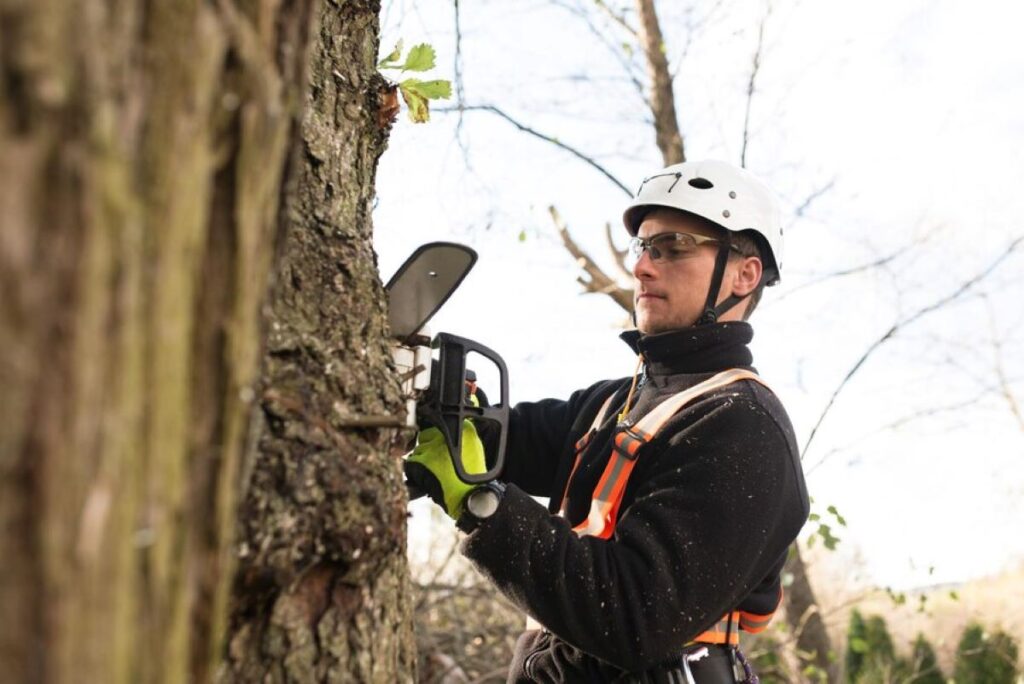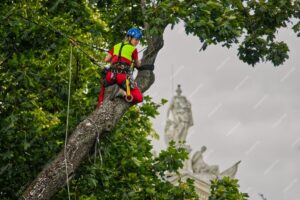Project Arborist Sydney: Managing Large Tree Projects
A project arborist in Sydney plays a crucial role in managing large-scale tree projects within urban developments and construction sites. These qualified professionals combine their knowledge of tree care with project management skills to safeguard valuable trees during construction activities.
The role involves:
- Assessing trees in detail
- Developing thorough management plans
- Overseeing construction work near trees
- Making sure local laws are followed
Large tree projects in Sydney’s urban areas require special attention because of:
- Complicated root systems affecting infrastructure
- Limited space for construction work
- High-value trees that need protection
- Strict council rules and approval processes
Project arborist sydney acts as a link between development needs and environmental conservation. They use their technical expertise to protect trees while allowing necessary construction work to proceed. Their knowledge spans various fields, including tree biology and construction methods, ensuring successful project outcomes through careful planning and implementation of protection measures.
This guide provides an in-depth look at the qualifications, responsibilities, and regulatory requirements that define the role of project arborists in Sydney’s changing urban landscape.
Qualifications and Expertise of Project Arborists
Project arborists in Sydney must possess comprehensive qualifications and specialised expertise to manage large-scale tree projects effectively. The AQF Level 5 Diploma in Arboriculture serves as the minimum qualification requirement, establishing a solid foundation in advanced tree care principles.
Essential Knowledge Areas for Qualified Project Arborists
Essential knowledge areas for qualified project arborists include:
- Tree Biology and Physiology: Understanding root system development, growth patterns, species-specific characteristics, and environmental adaptations.
- Advanced Tree Pathology: Identifying diseases, managing pests, analysing structural defects, and implementing treatment protocols.
- Risk Assessment and Management: Evaluating tree stability, identifying hazards, implementing safety protocols, and planning emergency responses.
Professional Tools Used by Project Arborists
Professional project arborists utilise state-of-the-art equipment for precise tree assessments:
- Sonic tomography devices
- Resistograph testing equipment
- Digital imaging systems
- GPS mapping tools
Practical Experience of Project Arborists
The expertise extends to hands-on experience with both private sector projects and government initiatives. Project arborists collaborate with:
- Local councils
- Property developers
- Construction companies
- Environmental agencies
This practical experience, combined with technical knowledge, enables project arborists to deliver comprehensive tree management solutions across diverse urban environments.
See Also : Land Clearing Tree Removal: Preparing Your Site
Responsibilities in Managing Large Tree Projects
Project arborists have important responsibilities in protecting trees during construction and development projects. These responsibilities include various aspects of tree protection and management:
1. Tree Health Assessment and Monitoring
- Conducting thorough inspections of tree health, structural stability, and root systems
- Identifying potential risks and hazards through advanced diagnostic techniques
- Documenting existing tree conditions with detailed photographic evidence
- Regular monitoring of tree responses to construction activities
2. Management Plan Development
- Creating site-specific tree protection strategies
- Establishing clear guidelines for construction activities near protected trees
- Designating Tree Protection Zones (TPZ) with appropriate fencing
- Specifying permitted and prohibited activities within TPZs
3. Construction Site Supervision
- Direct oversight of excavation works near tree root zones
- Monitoring compliance with tree protection measures as outlined in the local regulations
- Immediate intervention when tree protection is compromised
- Coordination with construction teams to prevent accidental damage
4. Remediation and Documentation
- Prescribing treatments for construction-impacted trees
- Implementing root protection systems where necessary
- Preparing detailed arboricultural reports for council submissions
- Maintaining accurate records of all tree-related activities and decisions
These responsibilities require constant attention and expertise to maintain tree health while allowing development to progress. Project arborists must find a balance between construction needs and tree preservation goals, making sure to follow local regulations and industry best practices.
Importance of Project Arborists in Construction and Development
Project arborists are crucial in safeguarding Sydney’s urban forest during construction and development projects. Their knowledge helps avoid expensive errors and guarantees the preservation of important trees through careful planning and supervision.
Tree Protection During Construction
Project arborists play a vital role in protecting trees during construction activities. They implement various measures to ensure the safety and well-being of trees, including:
- Implementation of protective barriers and exclusion zones
- Monitoring of root systems during excavation
- Assessment of soil compaction risks
- Guidance on equipment placement and movement
- Supervision of trenching near critical root zones
Development Application (DA) Compliance
In addition to tree protection, project arborists also ensure compliance with development application requirements. This involves:
- Preparation of detailed tree protection plans
- Documentation of existing tree conditions
- Specification of protection measures
- Regular site inspections and reporting
- Certification of compliance with council requirements
The integration of sustainable urban forestry practices creates harmonious development outcomes. Project arborists identify opportunities to:
- Retain significant trees through modified design solutions
- Incorporate trees into new landscape plans
- Recommend appropriate species for replacement plantings
- Establish long-term tree management strategies
- Create wildlife corridors and habitat connectivity
Professional arboricultural input during the early planning stages helps avoid conflicts between construction activities and tree preservation objectives. This proactive approach reduces project delays, minimises costs, and maintains Sydney’s valuable tree canopy for future generations.
Through careful assessment and strategic planning, project arborists enable development while protecting the environmental and aesthetic benefits that mature trees provide to Sydney’s urban landscape.

Core Services Provided by Project Arborists
Project arborists offer specialised services that are crucial for the success of construction and development projects. These services include:
1. Construction Site Supervision
- On-site monitoring during critical construction phases
- Implementation of tree protection zones
- Assessment of root systems during excavation
- Documentation of tree responses to construction activities
2. Compliance and Certification
- Detailed arboricultural impact assessments
- Development of tree protection plans and verification of protection measure implementation
- Certification of compliance with council requirements
3. Specialised Consulting Services
- Analysis of complex development scenarios
- Solutions for tree-structure conflicts
- Root mapping and investigation
- Soil assessment and management recommendations
4. Advanced Tree Care Strategies
- Structural pruning techniques for mature specimens
- Crown reduction and selective thinning methods
- Species selection for development sites
- Post-construction tree recovery programs, including advanced tree care strategies
Project arborists use advanced equipment and diagnostic tools to provide these services. Their combination of technical knowledge and practical experience allows them to protect important trees while also allowing development to progress. By closely monitoring and carefully intervening when necessary, project arborists ensure that trees remain healthy throughout construction and create conditions for their long-term survival in altered environments. They also follow specific guidelines such as those outlined in the Roadside Tree Design Guidelines to further enhance their effectiveness in preserving tree health during development projects.
Regulatory Compliance and Legal Requirements in Tree Management
Project arborists play a crucial role in navigating Sydney’s complex tree management regulations. Each Local Government Area (LGA) has specific rules for removing, pruning, and protecting trees during development activities.
Key Legal Requirements:
- Development Application (DA) submissions must include detailed arboricultural impact assessments
- Tree Protection Zone (TPZ) calculations and implementation plans
- Risk assessment documentation for council review
- Environmental impact statements for protected species
- Heritage conservation compliance where applicable
Sydney councils require certified arborist reports for:
- Trees exceeding specified height or trunk diameter thresholds
- Specimens listed on Significant Tree Registers
- Native vegetation in environmentally sensitive areas
- Trees affected by construction or development works
Non-compliance with local environmental laws can result in substantial penalties, including:
- Monetary fines up to $110,000
- Mandatory remediation orders
- Legal proceedings
- Development approval delays
Project arborists stay updated on the regulatory frameworks of different Sydney LGAs, ensuring all tree management activities meet strict compliance standards while facilitating smooth project progression.
Professional Development and Industry Affiliations for Project Arborists
Project arborists must maintain rigorous professional development standards to deliver expert tree management services. The dynamic nature of arboricultural practices demands continuous learning through:
- Specialised Training Programs
- Advanced tree risk assessment techniques
- New equipment operation certifications
- Latest sustainable urban forestry methods
- Industry Accreditations
- Arboriculture Australia membership
- International Society of Arboriculture (ISA) certification
- Tree Contractors Association affiliation
Professional bodies provide essential resources for staying current with industry developments:
- Research publications and technical updates
- Peer networking opportunities
- Access to international best practices
- Specialised workshops and conferences
These affiliations demonstrate a commitment to excellence in arboricultural practices. Project arborists who maintain active memberships gain access to cutting-edge research, innovative techniques, and a global network of expertise. The knowledge exchange through these professional channels ensures the delivery of high-quality tree management services across Sydney’s diverse urban landscape.

Conclusion
Project arborists are crucial for protecting Sydney’s urban forest, balancing the needs of development with the importance of preserving the environment. Their knowledge ensures that trees remain healthy and thrive while construction activities are carried out in accordance with the law.
The intricate nature of large tree projects requires qualified professionals who understand local laws, have technical expertise, and hold up-to-date industry certifications. These experts provide:
- Comprehensive tree management solutions aligned with council requirements
- Expert guidance throughout development processes
- Risk mitigation strategies protecting both property and vegetation
- Documentation supporting legal compliance
Hiring a certified project arborist is a smart investment for both property development and environmental responsibility. Their specialised knowledge protects valuable trees while allowing construction to continue, creating spaces where urban development and nature can coexist peacefully.
For complex tree management needs in Sydney, consulting qualified project arborists remains the most reliable path to achieving successful project outcomes.

